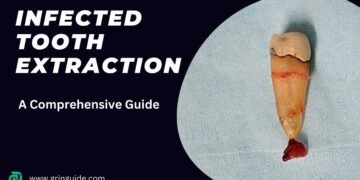Table of Contents
Introduction
Thumb sucking is a prevalent habit among infants and young children, often serving as a source of comfort and security. While it is typically considered a natural self-soothing behavior, prolonged thumb sucking can lead to significant dental health issues. Understanding the implications of this habit on oral health is crucial for parents aiming to foster a healthy developmental environment for their children.
When thumb sucking extends beyond the early years, it can negatively impact the alignment of teeth and the overall structure of the mouth. The consistent pressure from sucking on a thumb can cause teeth to become misaligned, leading to problems such as an overbite, underbite, or open bite. These malocclusions can result in difficulties with chewing, speaking, and maintaining proper oral hygiene. Additionally, the habit can affect the roof of the mouth, leading to alterations in its shape and structure.
Addressing thumb sucking early is essential to prevent these long-term dental complications. Pediatric dentists recommend that children should ideally cease thumb sucking by the age of four to reduce the risk of permanent damage to their teeth and jaws. Early intervention can include positive reinforcement, the use of thumb guards, or other behavioral strategies to help children break the habit.
Parents play a pivotal role in guiding their children away from thumb sucking. By understanding the potential dental implications and taking proactive steps to mitigate them, parents can help ensure their child’s oral health remains intact. Recognizing the signs of prolonged thumb sucking and seeking professional advice when necessary can make a significant difference in preventing future dental issues.
Understanding the Thumb Sucking Habit
Thumb sucking is a common behavior observed in infants and young children. It serves as a self-soothing mechanism that provides comfort and security, especially in unfamiliar situations or when a child feels anxious. This natural reflex often begins in utero and continues after birth, offering a sense of reassurance when the child is distressed or tired.
From a psychological perspective, thumb sucking can be linked to an infant’s need for oral stimulation. This habit is often comforting and can help children navigate early developmental challenges. Emotionally, thumb sucking may act as a coping strategy, aiding in the regulation of emotions and providing a sense of control in their immediate environment.

However, while the habit is usually benign in the early years, it can become problematic if it persists beyond a certain age. Most children naturally stop thumb sucking between the ages of two and four. This cessation often coincides with increased social interactions and the development of other coping mechanisms. Nonetheless, if the habit continues beyond age five, it may warrant concern and intervention, particularly due to potential dental issues or social stigmatization.
Understanding the underlying reasons why some children find it difficult to stop thumb sucking is crucial for parents. The transition away from this habit can be challenging due to its deeply ingrained nature and the comfort it provides. In some cases, persistent thumb sucking may indicate underlying anxiety or unmet emotional needs that require attention.
In conclusion, while thumb sucking is a natural and comforting behavior for young children, it is essential to monitor its progression. Recognizing when it becomes a concern is the first step in addressing the habit effectively. By understanding the emotional and psychological aspects of thumb sucking, parents can better support their children through this transition.
Effects of Thumb Sucking on Dental Health
Thumb sucking, a common habit among infants and young children, can have significant implications on dental health if it persists beyond the early years. Persistent thumb sucking exerts pressure on the developing structures of the mouth and jaw, potentially leading to several dental issues. One of the most frequently observed problems is the development of an overbite. An overbite occurs when the upper front teeth extend too far over the lower front teeth, which can affect both the appearance and function of the teeth.
Another dental issue associated with prolonged thumb sucking is an open bite. An open bite happens when the front teeth do not meet when the mouth is closed, creating a gap. This condition can make it difficult for children to bite and chew food properly, and it may also affect speech development. Additionally, persistent thumb sucking can lead to misalignment of teeth, known as malocclusion. This misalignment can cause discomfort, difficulty in maintaining oral hygiene, and may require orthodontic treatment to correct.
Dental professionals emphasize that the continuous habit of thumb sucking can significantly influence the development of the mouth and jaw. The repetitive pressure from thumb sucking can alter the natural growth pattern, resulting in changes that might necessitate orthodontic intervention. For instance, the upper jaw may become narrower, leading to crowding of the teeth and further complicating dental health.
Orthodontists often advise parents to be vigilant about their child’s thumb sucking habits and to seek guidance if the behavior persists beyond the age of four. Early intervention can help prevent the need for extensive orthodontic treatment in the future. By addressing thumb sucking early on, parents can ensure healthier dental development and avoid the complications associated with prolonged thumb sucking.
Thumb Sucking Appliances: What Are They and How Do They Work?
Thumb sucking is a natural behavior often seen in young children, providing them comfort and security. However, persistent thumb sucking beyond the early years can lead to dental issues and other complications. Thumb sucking appliances are specially designed tools that help discourage this habit by creating a physical barrier, making it difficult for children to continue sucking their thumbs.
One common type of this appliance is the thumb guard. Thumb guards are typically made of soft, flexible plastic and are worn over the thumb. These devices are designed to be comfortable yet effective in preventing the child from achieving the same level of suction and comfort they get from sucking the thumb. Thumb guards are generally adjustable and can be secured with straps to ensure they stay in place.

Another option is the thumb crib, a small, metal device fitted by a dentist or orthodontist. The thumb crib is attached to the upper teeth and serves as a barrier that prevents the thumb from comfortably resting against the roof of the mouth. By obstructing the usual thumb-sucking motion, the crib effectively discourages the behavior over time.

Additionally, there are habit-breaking gloves, which cover the entire hand and are often made of lightweight, breathable fabric. These gloves can be worn during sleep or throughout the day, making it inconvenient for the child to suck their thumb. Some parents also opt for bitter-tasting nail polishes, which serve as a deterrent by making thumb-sucking an unpleasant experience.
The effectiveness of thumb-sucking appliances varies, with many parents and healthcare professionals reporting positive results. Consistency in usage plays a significant role in their success. It is essential to ensure that the chosen appliance is safe, comfortable, and used according to the manufacturer’s or healthcare provider’s instructions. Regular check-ups with a dentist or orthodontist can help monitor progress and make any necessary adjustments.
In summary, thumb sucking appliances offer a practical solution for parents looking to help their children break the thumb sucking habit. By creating physical barriers and discouraging the behavior, these devices can lead to healthier dental development and overall well-being for the child.
Thumb Sucking Habit Breakers: Tools and Techniques
Breaking the thumb-sucking habit can be a challenging but achievable goal for many parents. Various tools and techniques are available to support children in this endeavor, ranging from physical devices to behavioral strategies. One of the most common methods involves using thumb guards or mittens, which physically prevent the child from sucking their thumb. These devices are particularly effective during sleep, when the habit is often subconscious.
Behavioral strategies are equally essential in addressing thumb sucking. Positive reinforcement is a powerful tool; rewarding children with praise or small incentives when they refrain from thumb-sucking can create a positive association with the desired behavior. Distractions also play a crucial role. Providing children with engaging activities or toys can keep their hands busy and reduce the temptation to suck their thumb.
Additionally, some parents find success with bitter-tasting nail solutions. These products, applied to the thumb, create an unpleasant taste that deters thumb sucking. However, it is important to use these solutions under the guidance of a pediatrician to ensure safety and effectiveness.
Consulting with pediatricians and child psychologists can offer valuable insights into personalized strategies for your child. For instance, pediatricians may recommend oral substitutes like teething toys, which can satisfy the oral fixation in a healthier manner. Meanwhile, child psychologists suggest addressing underlying emotional triggers. Thumb sucking can often be a coping mechanism for stress or anxiety, and identifying these root causes can help in developing a more comprehensive approach.
In summary, a combination of physical devices and behavioral strategies, supported by professional advice, can significantly aid in breaking the thumb sucking habit. By employing these tools and techniques, parents can effectively guide their children towards healthier habits, ensuring their overall well-being.
Choosing the Right Thumb Sucking Device for Your Child
When it comes to breaking this habit, selecting the appropriate device for your child is crucial. A variety of factors must be considered, such as the child’s age, the severity of the habit, and any particular dental issues they may have. Each of these elements can significantly influence the effectiveness of the chosen device.
For younger children, soft and comfortable devices like thumb guards or finger puppets might be more suitable. These are designed to gently discourage thumb sucking without causing discomfort. However, if the habit is more ingrained, especially in older children, more structured devices like thumb sucking deterrents or orthodontic appliances might be necessary. These devices often cover the thumb and make it less appealing to suck, helping to gradually reduce the behavior.
Dental issues also play a pivotal role in selecting the right thumb sucking device. Children who exhibit signs of dental misalignment or bite problems may benefit from custom-made orthodontic devices. These not only deter thumb sucking but also help in correcting any developing dental issues. Consulting with a pediatric dentist can provide invaluable insights into the specific needs of your child, ensuring that the chosen device is both effective and safe.
Popular devices include the TGuard ThumbGuard, which is a flexible plastic cover that fits over the thumb, making sucking difficult. Another option is the Mavala Stop, which is a bitter-tasting nail polish applied to the thumb to deter sucking. Each of these devices has its pros and cons; for instance, the ThumbGuard is non-toxic and easy to use, but it may be noticeable and possibly uncomfortable for some children. On the other hand, Mavala Stop is discrete and easy to apply, but some children might get used to the taste and continue the habit.
Ultimately, the best approach often involves a combination of the right device and professional guidance. Consulting with a pediatric dentist for personalized recommendations can ensure that the chosen method is tailored to your child’s unique needs, increasing the likelihood of successfully breaking the thumb sucking habit.
Real-Life Success Stories: Breaking the Thumb Sucking Habit
Many parents face the challenge of helping their children break the thumb sucking habit, and success often comes through perseverance, creativity, and a variety of methods. One such parent, Laura, shared her journey with her five-year-old daughter, Emily. After trying several strategies, Laura found success with a combination of positive reinforcement and a thumb guard. Initially skeptical, Emily adapted to the thumb guard, and within a few weeks, her urge to suck her thumb diminished significantly. Laura noticed remarkable improvements in Emily’s dental alignment and overall confidence.
Another parent, Mark, recounted his experience with his son, Jake, who had been an avid thumb sucker since infancy. Mark and his wife decided to try a reward system, where Jake earned points for every day he went without thumb sucking. These points could be exchanged for small toys or extra playtime. The system provided immediate motivation, and Jake’s commitment grew as he saw tangible rewards. Over time, the habit phased out, leading to noticeable enhancements in Jake’s speech clarity and social interactions.
Similarly, Maria shared her story about her daughter, Sophia, who struggled with thumb sucking during stressful situations. Maria introduced a coping mechanism involving a stress ball and gentle reminders. She also employed a pediatric dentist’s advice to use a bitter-tasting nail solution. These combined approaches gradually reduced Sophia’s dependency on thumb-sucking. The habit’s cessation contributed to better dental health, preventing potential orthodontic issues.
These testimonials illustrate that breaking the thumb-sucking habit requires a tailored approach, considering each child’s unique needs and personality. Whether through thumb guards, reward systems, or alternative coping strategies, the common thread in these success stories is persistence and support. Parents who face this challenge can draw encouragement and practical insights from these real-life experiences, knowing that breaking the thumb sucking habit is achievable and beneficial for their children’s dental health and overall well-being.
Conclusion: Taking Action to Protect Your Child’s Dental Health
Throughout this comprehensive guide, we have delved into the intricacies of thumb sucking, a common yet concerning habit among children. We explored its causes, potential consequences on dental health, and effective strategies to break the habit. Early intervention is crucial, as prolonged thumb sucking can lead to various dental issues, such as misaligned teeth and bite problems. By addressing this habit promptly, parents can help mitigate long-term dental complications and ensure their child’s healthy development.
Parents are encouraged to take proactive steps, including the implementation of habit-breaking techniques and the use of dental appliances if necessary. Positive reinforcement, creating a supportive environment, and understanding the psychological factors behind thumb-sucking can significantly aid in the cessation process. Additionally, seeking professional guidance from pediatric dentists or child psychologists can provide tailored solutions and support for both parents and children.
It is essential to remember that breaking the thumb-sucking habit is a gradual process that requires patience and consistency. By employing the right strategies and maintaining a positive outlook, parents can successfully guide their children towards overcoming this habit. With determination and the appropriate approach, the journey to healthier dental development and overall well-being can be a rewarding experience for both parents and children.
Ultimately, by taking decisive action and leveraging available resources, parents can protect their child’s dental health and foster a lifetime of healthy habits. The commitment to addressing thumb sucking early on paves the way for a brighter and healthier future, ensuring that children can smile confidently and thrive in their developmental years. Together, we can help our children overcome the thumb-sucking habit and achieve optimal dental health.
FAQs
What Does Thumb Sucking Mean?
Thumb sucking is a common habit observed in many infants and young children. It involves placing the thumb into the mouth and rhythmically sucking on it. This behavior is often seen as a self-soothing mechanism that can provide comfort and security to a child.
What is the psychology behind thumb sucking babies?
From a psychological perspective, thumb sucking is considered a natural reflex that begins in the womb. It is believed to be linked to the baby’s need for oral stimulation and comfort. This habit can help babies manage stress and anxiety, acting as a coping mechanism during challenging times.
What is the cause of thumb sucking?
The primary cause of thumb sucking is the innate sucking reflex that infants are born with. However, environmental factors such as the child’s need for comfort, hunger, and even boredom can contribute to the continuation of this habit. In some cases, it might also be a response to feeling insecure or needing attention.
Is Thumb sucking Good or Bad?
Thumbsucking is generally harmless in the early years of a child’s life. It becomes a concern when the habit persists beyond the age of five, as it can lead to dental problems, such as misaligned teeth and changes in the roof of the mouth. Additionally, prolonged thumb sucking might affect the development of speech patterns.
When to Stop Thumb sucking?
Experts recommend encouraging children to stop thumb sucking by the age of four to five. Parents can use positive reinforcement, such as praise and rewards, to motivate their child to quit. If the habit continues, consulting a pediatrician or a pediatric dentist for further advice might be necessary.











